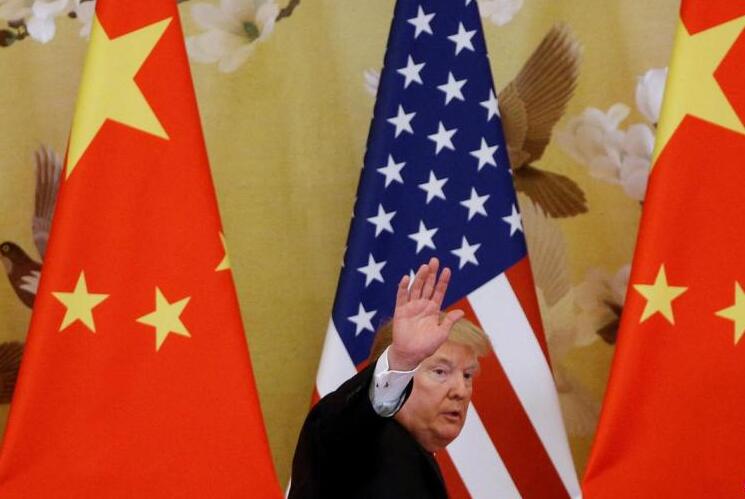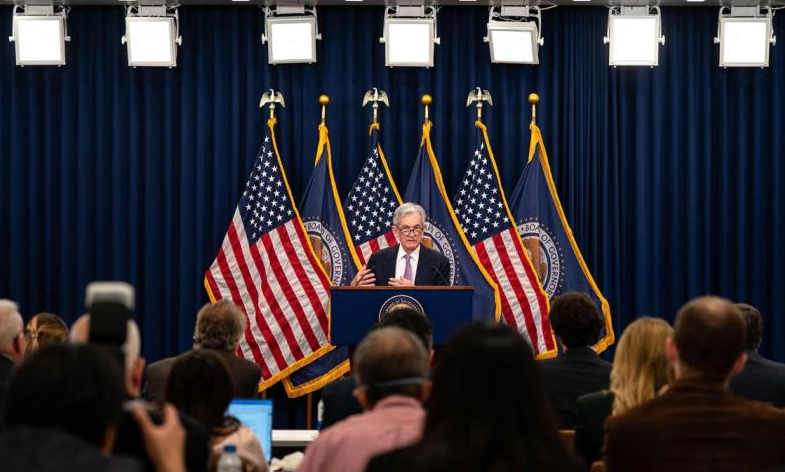
When trying to understand the impact of the new Trump administration, it is important to remember a popular saying in Washington: personnel is policy. What policies there will be depends on the people in the team who hold positions and are responsible for the day-to-day management of policies. On war and peace, the president will make the final decision.
No election in this century has been so closely watched by the world as the 2024 US presidential election. This shows that, whether we like it or not, the United States is still a decisive force in the world, which can profoundly influence the direction of war and peace, alliances and partnerships, trade and investment, climate change and global governance. The American people are choosing between two candidates, two different worldviews, and who can better understand voters and their main concerns.
Trump reiterated the “America First” policy he proposed in the 2016 campaign and listed immigration and the economy as important issues. He repeatedly asked voters: “Are you better off today than you were four years ago?” On November 5, he ushered in a red wave that made him a “triple crown” and completed the Grand Slam, giving the Republican Party control of the presidency, the Senate, and the House of Representatives. This makes Trump, the 47th President of the United States, who has the support of Congress, a very powerful man. In addition, the Supreme Court is currently majority-represented by Republican-appointed judges.
What impact will Trump’s second term have on Asia?
It is worth noting that he rarely talked about foreign policy during his campaign. This is actually normal, as elections around the world are almost always centered on domestic issues. Trump is expected to focus more on domestic affairs during his presidency. He has promised to make drastic changes to government institutions, including studying how to dismantle the “deep state” and reduce bureaucracy. He is expected to focus on controlling borders and deporting illegal immigrants on a large scale in the early days of his administration.
Putting aside Singapore and ASEAN (which have been analyzed a lot), Asia’s major, major and medium-sized countries have all dealt with the Trump administration, so Trump 2.0 should not bring too much shock, but people will be extremely anxious about trade policy, security policy, and the direction of US-China relations.
Impact on US-China relations
The relationship between the United States and China will be closely watched because this bilateral relationship will set the tone for security and stability in Asia. In 2017, U.S.-China relations got off to a good start based on the personal relationship between U.S. President Trump and Chinese President Xi Jinping, but the trade war in 2018 followed, followed by tightening and scrutiny of technology exports to China. The U.S. imposed export controls and sanctions on China’s high-tech sector.
Instead of lifting sanctions, the subsequent Biden administration has become more systematic and targeted, with comprehensive restrictions on the export of advanced chips to China, and will certainly cover other new technologies.
Will Trump’s second term be different?
The fierce competition between the United States and China is unlikely to be reversed. This is a structural competition for dominance and will continue for a long time. There may be some changes in the engagement between the two sides, making the relationship better and worse, and perhaps even worse, but the overall trend will not change fundamentally.
During his first presidency, Trump imposed tariffs of up to 25% on some Chinese imports to the United States. This time, he threatened to impose tariffs of 60% on Chinese imports and 10% to 20% on goods from the rest of the world. Assuming this is a negotiating position, we may end up with lower tariffs; nevertheless, this will severely affect international trade, raise costs, trigger retaliation, and encourage the spread of protectionism.
The US-China trade war will affect ASEAN countries because we have been part of the US-China trade supply chain. Vietnam, Thailand, and Malaysia have become beneficiaries of the “China + 1” strategy adopted by Chinese companies and foreign companies in China when sanctions were imposed on Chinese exports. But there are reports that the Biden administration will close export loopholes and impose sanctions on diversified supply chains. If the Biden administration does not close the loopholes, the Republican administration is likely to take this action.
On the Taiwan issue, as the “core of the core interests” of mainland China, Trump has shown that he wants to maintain strategic ambiguity because it will give him a better negotiating position. He reportedly said that Taiwan “took away about 100% of our chip business” and hoped to make Taiwan pay more to the United States for defense. In Trump’s second term, the uncertainty and concerns of an accidental conflict between the United States and China in the Taiwan Strait remain. However, many people say that Trump does not like war. O’Brien, who served as national security adviser during Trump’s first term, recently reminded readers in the prestigious American magazine Foreign Affairs that Trump did not start a new war during his four years as president.
On the South China Sea issue, the US position will not change with the coming of the new Trump administration. The Pentagon is well aware that in order to maintain peace and security in the region, it must continue to ensure freedom of navigation in the South China Sea. This role is supported or acquiesced by ASEAN countries, some of which are sovereignty claimants and others are maritime economies. During Trump’s first term, the US Navy continued the Freedom of Navigation Operations exercises started during the Obama administration, but with less fanfare.
Japan strives to maintain the best relationship
No matter who is president, Japan will strive to maintain the best relationship with the United States. As a treaty ally with security guaranteed by the United States, Japan will be asked to pay more for its own defense. The late former Japanese Prime Minister Shinzo Abe had a special relationship with then-US President Trump – in November 2016, Abe became the first world leader to visit the president-elect. The United States only wants to act as an “offshore balancer”, and Japan takes this seriously and has been actively promoting a “mini-multilateral” security cooperation network with South Korea, Australia, the United States, and most recently the Philippines to strengthen deterrence in the region.
Japan will closely watch the trade policies of the Trump administration in the second term in terms of tariffs and investment reviews. The US-China trade war will have an impact on Japan, as China is Japan’s largest trading partner and one of the preferred destinations for Japanese companies.
South Korea focuses on the stance on the Korean Peninsula
Like Japan, South Korea’s concerns are also focused on trade and security. South Korea will also be asked to pay more for defense. Its main focus will be the Trump administration’s stance on the Korean Peninsula and how Trump will deal with Kim Jong-un this time. Although the North Korean leader has a new ally in Russia, he will eventually have to work with the United States to lift sanctions. The current president, Yoon Seok-yeol, has a tougher attitude towards North Korea than his predecessor, Moon Jae-in, so the situation is different from before. Trump’s unpredictability will be an advantage in dealing with Kim Jong-un.
India is an important counterweight to China
India believes that Trump’s rule will not cause it any problems. Indian Prime Minister Narendra Modi has a good personal relationship with both Trump and current President Joe Biden. Both presidents admire Modi as a strong leader, but India does have a trade surplus of about US$36.7 billion (S$48.8 billion) with the United States. This can be easily resolved in a friendly manner, as India is a member of the Quadrilateral Security Dialogue (Quad) and joined the “Free and Open Indo-Pacific” strategy during the first term of the Trump administration. Any US administration will attach importance to India as an important counterweight to China, and the differences with India have been ignored by the Biden administration.
Australia and New Zealand
A comprehensive analysis of the region should also include Australia and New Zealand, otherwise the narrative will be incomplete. Both countries belong to the “Five Eyes” intelligence alliance composed of Anglophone countries, indicating that this is a very close security organization. Like other treaty allies, the two countries are expected to be asked to pay more for the protection of the United States.
Australia, as a long-term ally of the United States, plays a more active and important role by joining the “mini-multilateral” security cooperation mechanism led by the United States to strengthen security in the Indo-Pacific region. In 2024, it signed the Australia-UK-US Trilateral Security Partnership Agreement (AUKUS) with the United States and the United Kingdom. We can expect AUKUS to remain in effect during the Trump administration. Australia will be watching the US-China relationship closely, as China is Australia’s largest bilateral trading partner in 2023, accounting for 26% of Australia’s global trade. US tariffs and sanctions on China will have a significant impact on Australia’s trade. Australia has abundant critical mineral resources and is part of a vital US supply chain. If a catastrophic trade war breaks out that hurts US friends and allies, Australia can speak out.
New Zealand has a different security relationship with the United States. As a treaty ally, New Zealand must work around its anti-nuclear policy, although it recently asked to join AUKUS. New Zealand is a trading country and will be concerned about the Trump administration’s tariff plans on US imports.
Finally, when trying to understand the impact of the new Trump administration, it is important to remember a popular saying in Washington: personnel is policy. What kind of policy will be depends on the people in the team who hold positions and are responsible for the day-to-day management of policy. The president will set the direction and personally handle the policies that are most important to him. He will make the final call on war and peace. We will have to see who he appoints to his team to get a more nuanced picture of his policies. Asia is bracing for far-reaching changes, but hopefully the consequences will be less destructive.









